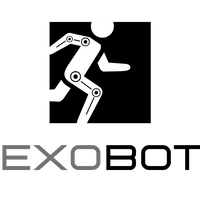Blog
Future is here, But are we ready?
Ethical Considerations in Bionic Technology: A Developing World Perspective
Imagine regaining the ability to hold your child's hand, to tie your shoelaces, or to feel the cool grass beneath your bare... well, not exactly bare, but bionic foot! Bionic limbs are no longer science fiction; they're a tangible reality with the potential to transform lives.
But hold on a minute – while the developed world is abuzz with excitement, a crucial question lingers:
“Will this revolution reach everyone, or is it destined to be a privilege for the wealthy few?”
Munish Kumar
May 21, 2024
Let’s take India, for example
Here, millions live with limb loss, often due to accidents or preventable diseases.
Basic healthcare can be a struggle, let alone the thought of a high-tech bionic limb.
The cost alone could be a life's savings, pushing this life-changing technology out of reach for the vast majority.
This creates a huge disability gap
“Bionic limbs shouldn’t be a luxury for the fortunate few”
That’s why the ethical considerations surrounding bionic limbs become even more pressing in a developing world context
Beyond the Initial Cost: The Sustainability Struggle
Okay, so affordability is a hurdle. But what about after you get your bionic limb? These marvels of engineering require maintenance, replacement parts, and ongoing adjustments. In a country where skilled technicians might be scarce, the question becomes: how do we ensure these limbs don't end up collecting dust on a shelf because fixing them is simply too expensive or inconvenient?
"Sustainability is key," says Maya, a young physiotherapist working with amputees in rural India. "We need limbs that are built to last and can be easily maintained, even in remote areas."
Building the Infrastructure, Brick by Bionic Brick
Bionic limbs aren't just high-tech devices; they require a skilled workforce to fit, calibrate, and provide ongoing support.
Does the current healthcare infrastructure in developing countries have the capacity to train technicians and medical professionals to handle this sophisticated technology?
“This isn't just about buying the limbs; it's about building the entire ecosystem to ensure they can be used effectively for years to come.”
Who Gets to Walk Again? Equity and Transparency
Imagine this: a limited number of bionic limbs are available in a developing country. Who gets to walk again?
Should it be solely based on who can afford them first, creating a situation where financial muscle trumps genuine need?
Absolutely not. This is where accessibility, affordability, and awareness becomes crucial.
“We need a system that considers factors like medical necessity, potential for improvement in quality of life, and geographical accessibility. Raising awareness and educating local communities about bionic limbs is also vital.”
Beyond the Tech: Addressing Cultural Perceptions
Culture plays a big role in how people perceive disability. In some societies, bionic limbs might be seen as a path to normalcy, a way to erase the physical difference.
But what if the cultural perception of disability is more nuanced? Could these limbs reinforce negative stereotypes or create pressure to conform to a certain standard of "ability"?
“Understanding and addressing these cultural nuances is essential for successful implementation.”
The Emotional Journey: More Than Just a Gadget
The psychological impact of receiving a bionic limb can't be ignored. The expectations can be high, and the reality of adjusting to a new limb can be challenging.
Will there be adequate support for individuals who might struggle emotionally or physically with their new bionic companions?
Advancing Bionic Limbs for an Inclusive Future
Bringing Down the Barriers
Constantly exploring ways to reduce production costs without compromising on quality
Beyond Tech, Beyond Limits
We work with experts to ensure our approach respects local beliefs and provides psychological support
EXOBOT
Built to Last, Build to Thrive
Our limbs are built to last and can be easily repaired or replaced in resource-limited settings
Transparency and Equity
We develop need-based criteria for allocating bionic limbs.
Building Bridges, Not Walls
We collaborate with local organizations to build infrastructure and train technicians
Exobot Dynamics stands at the forefront of this ethical imperative. We are driven by a mission to create a world where bionic limbs are not a marker of privilege, but a tool for human potential to flourish, regardless of circumstance. Together, we can ensure that the future of bionic limbs is a future of inclusivity, empowerment, and a life without limitations.
Exobot Dynamics pvt ltd
Join us
On our mission to end physical disability...
